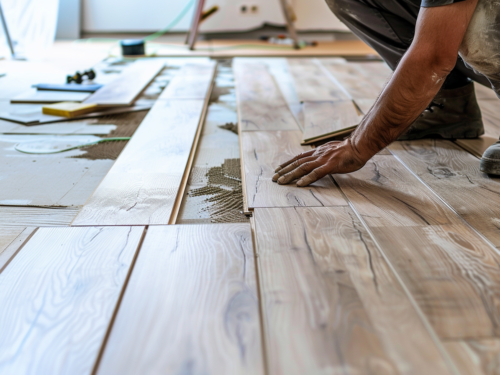
What Should I Know About Flooring Warranties?
When you’re choosing new flooring for your home, one important thing to consider is the warranty. Flooring warranties can help protect your investment and give you peace of mind. But understanding what a warranty covers can be tricky. In this blog, we will break down everything you need to know about flooring warranties so you can make the best choice for your home.
What is a Flooring Warranty?
First, let’s start with the basics. A flooring warranty is a promise from the manufacturer or retailer that their product will perform as expected for a certain period of time. If something goes wrong, the warranty might cover repairs or replacement. Essentially, it’s a way to ensure you get what you paid for and that your flooring will last.
Types of Flooring Warranties
There are different types of warranties for flooring, and it’s important to understand each one. Here are the most common types:
1. Manufacturer’s Warranty
The manufacturer’s warranty is offered by the company that makes the flooring. This warranty usually covers defects in materials or workmanship. For example, if there are problems with the flooring that were caused during the manufacturing process, the manufacturer might offer to fix or replace it.
2. Retailer’s Warranty
A retailer’s warranty is provided by the store where you bought the flooring. This warranty might cover things like installation issues or other problems related to the purchase. It is important to check if the retailer offers this type of warranty and what it includes.
3. Extended Warranty
An extended warranty is an extra warranty that you can purchase on top of the standard manufacturer’s or retailer’s warranty. It often provides additional coverage, such as protection against wear and tear or damage that might occur over time.
What Does a Flooring Warranty Cover?
Warranties can vary, so it’s essential to know what is covered before you buy. Here are some common things that might be covered:
1. Defects in Materials
Most warranties cover defects in the flooring materials. This means if the flooring is defective due to problems in manufacturing, the warranty might cover repairs or replacement.
2. Wear and Tear
Some warranties cover wear and tear, especially for high-traffic areas. This means that if the flooring wears out faster than expected, the warranty might help with repairs or replacement.
3. Installation Issues
Certain warranties include coverage for installation problems. If the flooring was installed incorrectly and it causes issues, this type of warranty might cover the cost of fixing the installation.
What Does a Flooring Warranty Not Cover?
It’s just as important to know what a warranty does not cover. Here are some common exclusions:
1. Damage from Improper Use
Most warranties do not cover damage caused by improper use. For example, if the flooring is damaged because it was exposed to excessive moisture or heavy furniture, the warranty might not cover it.
2. Normal Wear and Tear
While some warranties cover wear and tear, others might only cover defects. Normal wear and tear from everyday use may not be covered, so it’s important to check the details.
3. Accidental Damage
Accidental damage, such as spills or scratches, is often not covered by a warranty. It’s essential to handle your flooring carefully and follow any maintenance guidelines provided by the manufacturer.
How to Make a Warranty Claim
If you need to make a warranty claim, follow these steps:
1. Read the Warranty Terms
Before making a claim, read the warranty terms carefully. This will help you understand what is covered and what is not.
2. Document the Problem
Take photos and write down details about the problem with the flooring. This documentation will be helpful when you make your claim.
3. Contact the Manufacturer or Retailer
Get in touch with the manufacturer or retailer where you bought the flooring. Provide them with all the necessary information and documentation about the problem.
4. Follow the Instructions
Follow any instructions provided by the manufacturer or retailer for making the claim. This might include sending in samples or allowing an inspection of the flooring.
Tips for Choosing Flooring with a Good Warranty
Here are some tips to help you choose flooring with a good warranty:
1. Compare Warranties
Different manufacturers and retailers offer different warranties. Compare the coverage, duration, and terms to find the best option for your needs.
2. Check the Details
Make sure to read the fine print and understand what is covered and what is not. This will help you avoid surprises later on.
3. Ask Questions
Don’t be afraid to ask questions about the warranty. If you’re unsure about any part of it, get clarification before making your purchase.
Understanding flooring warranties is crucial when choosing new flooring for your home. A warranty can protect your investment and provide peace of mind, but it’s important to know what is covered and what is not. By comparing different warranties, checking the details, and asking questions, you can make an informed decision and choose flooring that will meet your needs and expectations.


